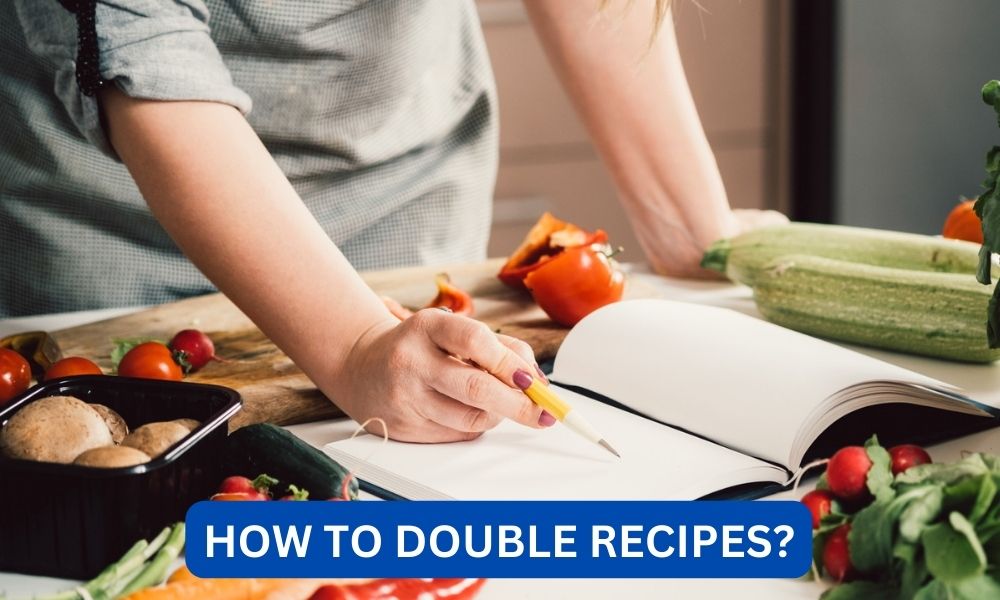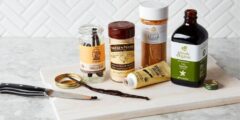Cooking is a form of art that requires precision, creativity, and patience. Whether you are a seasoned chef or a novice in the kitchen, one thing is for sure – recipes are the backbone of any successful dish. However, there are times when you may need to double a recipe, whether it’s for a large gathering or to have leftovers for the week. Doubling a recipe may seem like a simple task, but it requires careful planning and execution to ensure that the dish turns out just as delicious as the original. In this article, we will explore the various techniques and tips on how to double recipes successfully.
Contents
Why Double a Recipe?
Before we dive into the details of doubling a recipe, let’s first understand why one would need to do so. There are several reasons why you may need to double a recipe, such as:
- Feeding a large group of people: Whether it’s a family gathering, a potluck, or a holiday party, there are times when you need to cook for a large group of people. In such situations, doubling a recipe is a practical and efficient way to ensure that everyone is well-fed.
- Meal prepping: Doubling a recipe can also be a great way to save time and effort in the kitchen. By cooking a larger batch of food, you can have leftovers for the week, making meal prepping a breeze.
- Adjusting serving sizes: Some recipes may not yield enough servings for your needs. In such cases, doubling the recipe can help you achieve the desired number of servings.
The Basics of Doubling a Recipe
Doubling a recipe may seem like a simple task – just double the ingredients, right? While that may work for some recipes, it’s not always that straightforward. Here are some basic guidelines to keep in mind when doubling a recipe:
Read:a cup a cup a cup recipe- Double all ingredients: This may seem obvious, but it’s essential to double all the ingredients in a recipe, including spices and seasonings. This ensures that the flavors are balanced and not overpowering.
- Adjust cooking time: When doubling a recipe, the cooking time may also need to be adjusted. This is because a larger batch of food may take longer to cook. It’s best to keep an eye on the dish and use a thermometer to check for doneness.
- Use a larger pot or pan: It’s crucial to use a larger pot or pan when doubling a recipe to ensure that all the ingredients fit comfortably and cook evenly.
- Consider the size of your oven: If you are doubling a recipe that requires baking, make sure to consider the size of your oven. You may need to use multiple baking dishes or bake the dish in batches.
Techniques for Doubling Recipes
Now that we have covered the basics of doubling a recipe let’s explore some techniques that can help you successfully double any recipe.
1. Use a Recipe Converter
One of the easiest ways to double a recipe is by using a recipe converter. There are several online tools and apps available that allow you to enter the original recipe’s ingredients and serving size and then automatically adjust the measurements for the doubled recipe. This eliminates the need for manual calculations and ensures accuracy.
Read:what the fork recipes2. Double the Recipe in Stages
If you are doubling a recipe that requires a lot of prep work, it may be overwhelming to double everything at once. In such cases, it’s best to double the recipe in stages. For example, if the recipe requires chopping vegetables, you can chop them in batches, doubling the amount each time. This technique can also be helpful when cooking on a stovetop, as you can add the ingredients in stages, ensuring that everything cooks evenly.
3. Use a Kitchen Scale
When doubling a recipe, it’s crucial to be precise with the measurements. Using a kitchen scale can help you achieve accurate measurements, especially when it comes to ingredients like flour, sugar, and butter. Measuring by weight is more accurate than measuring by volume, and a kitchen scale can help you achieve consistent results.
4. Make a Test Batch
If you are doubling a recipe for the first time, it’s always a good idea to make a test batch before cooking for a large group. This allows you to make any necessary adjustments and ensures that the final dish turns out just as delicious as the original.
Read:What is gfo food?Tips for Doubling Specific Ingredients
While the basic guidelines for doubling a recipe apply to most dishes, there are some specific ingredients that may require special attention. Here are some tips for doubling specific ingredients:
1. Spices and Seasonings
When doubling a recipe, it’s essential to double the spices and seasonings as well. However, some spices, like cayenne pepper and chili powder, can be overpowering in large quantities. It’s best to add these spices gradually, tasting as you go, to achieve the desired level of heat.
2. Baking Powder and Baking Soda
When doubling a recipe that requires baking powder or baking soda, it’s crucial to adjust the measurements accordingly. For baking powder, use 1 ½ teaspoons for every cup of flour, and for baking soda, use ½ teaspoon for every cup of flour.
3. Flour
When doubling a recipe that requires flour, it’s best to measure by weight rather than volume. This is because the density of flour can vary, and measuring by weight ensures consistency. If you don’t have a kitchen scale, make sure to fluff the flour before measuring it with a measuring cup.
4. Liquids
When doubling a recipe that requires liquids, such as water or milk, it’s essential to use a larger measuring cup or a kitchen scale. It’s also crucial to adjust the cooking time accordingly, as a larger amount of liquid may take longer to heat up.
Common Mistakes to Avoid
While doubling a recipe may seem like a simple task, there are some common mistakes that can lead to a less-than-perfect dish. Here are some mistakes to avoid when doubling a recipe:
1. Not Adjusting Cooking Time
As mentioned earlier, a larger batch of food may take longer to cook. It’s crucial to keep an eye on the dish and use a thermometer to check for doneness. If the dish requires baking, make sure to adjust the baking time accordingly.
2. Not Using a Larger Pot or Pan
Using a smaller pot or pan when doubling a recipe can lead to overcrowding, uneven cooking, and even burning. It’s essential to use a larger pot or pan to ensure that all the ingredients fit comfortably and cook evenly.
3. Not Tasting and Adjusting as You Go
When doubling a recipe, it’s crucial to taste and adjust the flavors as you go. This is especially important when it comes to spices and seasonings, as doubling the amount can lead to an overpowering dish.
4. Not Making Adjustments for Different Cooking Methods
Some recipes may require different cooking methods, such as stovetop versus oven cooking. It’s essential to make adjustments accordingly when doubling a recipe. For example, if a recipe calls for sautéing vegetables, you may need to use a larger pan or sauté in batches to ensure even cooking.
Conclusion:
Doubling a recipe may seem like a daunting task, but with the right techniques and tips, it can be a breeze. Whether you are cooking for a large group or meal prepping for the week, doubling a recipe can save you time and effort in the kitchen. Remember to double all the ingredients, adjust cooking time, and use a larger pot or pan when doubling a recipe. Use a recipe converter or make a test batch to ensure accuracy, and don’t forget to taste and adjust the flavors as you go. By following these guidelines and avoiding common mistakes, you can successfully double any recipe and impress your friends and family with your cooking skills.








